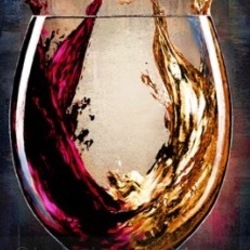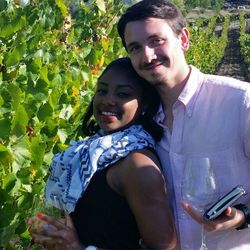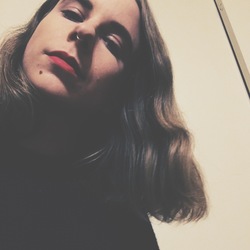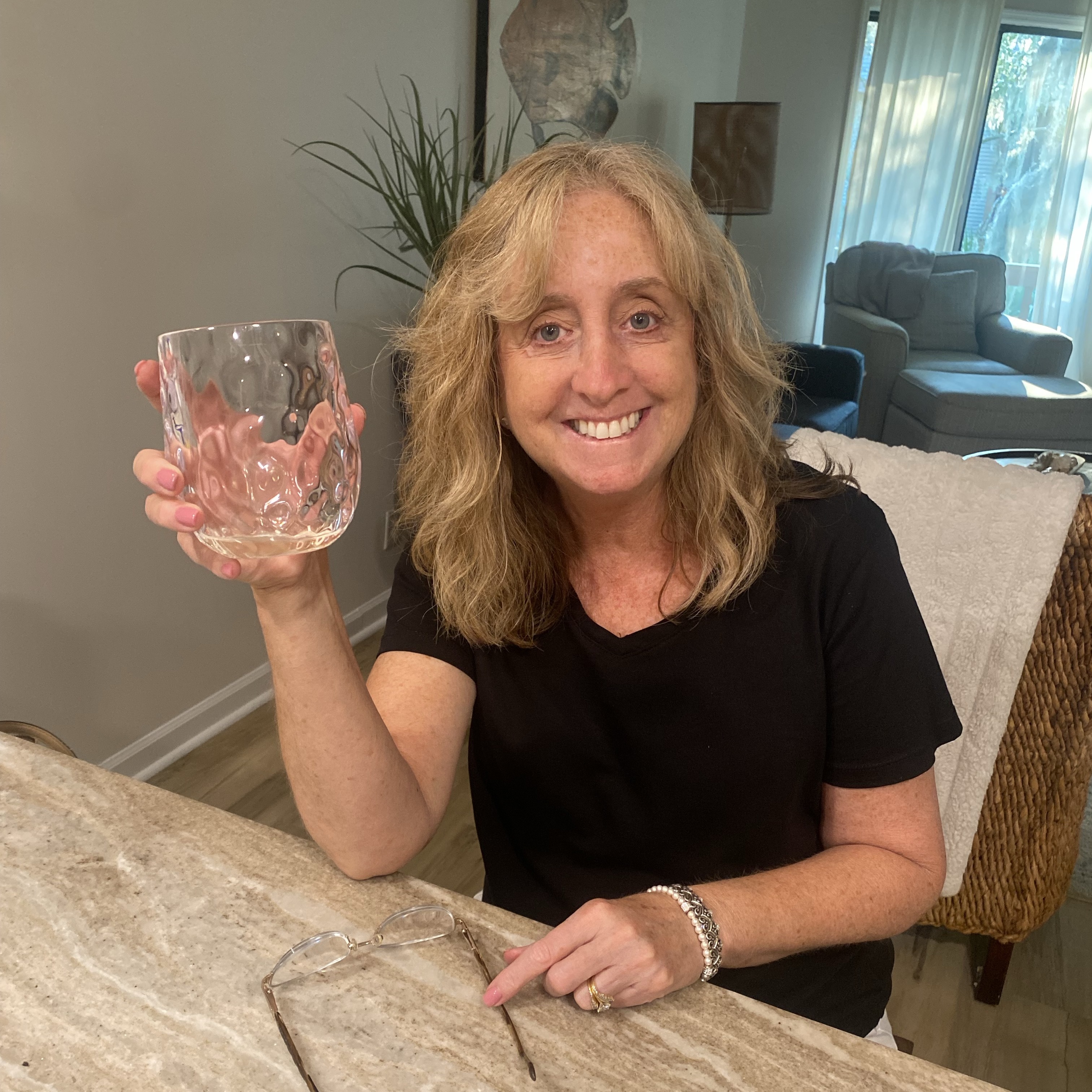Crux Fermentation Process
Broc Cellars
Luna Matta Vineyard Picpoul
Bright and crisp. Tart. I get more apple and pear from it than some of the lemon others speak of. A bit cider-y, perhaps due to their natural fermentation process. Fun to drink because it’s kind of sparkly when it hits your tongue without actually being a sparkling wine. — 7 years ago
Kasumi Tsuru
Extra Dry Kimoto Sake
Very clean, Yamahai (no lactic acid added to fermentation process). — 8 years ago
Clarendon Hills
Brookman Syrah 2005
On the nose; ripe, syrupy dark currants, blackberries, sweet slightly liqueured dark cherries, black plum, black raspberries, blue fruits, dark fruit gummy bears, tarry notes, black pepper, soft leather, dry brush, black licorice, caramel, dry crushed rocks, loamy dry top soil, violets, lilacs and lavender. The body is warm, thick, ultra rich, lush & elegant. The tannins are round & velvety but still have strength...50% resolved. It has another 10-12 years of good drinking ahead. The fruits are gorgeous & ripe; blackberries, sweet slightly liqueured dark cherries, black plum, black raspberries & lots of blue fruits & strawberries that paint the palate on the long set. A fair amount of tarry notes, black pepper, dry herbaceous notes (bay leaf), dry black olive, medium dark spice, dark chocolate, caramel, vanilla, clove, soft leather, dry brush, black licorice, dry crushed rocks, loamy dry top soil, violets, lilacs and lavender. The acidity is round & excellent. The long fruit driven finish is beautifully lush, elegant, well structured with near perfect balance. Photos of; Owner/Winemaker Roman Bratasiuk, their old gnarly 80-90 year old and low yielding vines and two of their vineyards. Producer history and notes...Clarendon Hills was founded in 1990 by Biochemist Roman Bratasiuks. Roman sought to further his passion for great wine by making some himself. Roman never trained as a winemaker. He planned on using his insight as a wine taster and scientist alike to dictate decisions. Roman sought to make a version of the wines he loved. The beginnings of Clarendon Hills effectively started in 1989 when he knocked on the door a local grower whose fruit he liked. A great friendship grew from from this by chance knock on the door. A handshake ensued and it became the first Clarendon Hills vineyard. On Saturday 24 February in 1990, Roman with just a bucket and secateurs arrived. Much to the growers shock, he began picking fruit himself. Roman started at 6 am and finished at 9 pm that evening; he picked half the entire vineyard himself and returned on Sunday the 25th to finish it. This process was repeated in a Merlot and Cabernet Sauvignon vineyard which formed the 3 single site wines produced in 1990. Crushing was performed by Roman using empty bottles to squash the fruit in a bucket, then transferred by that bucket, to one of the 3 small ex-dairy tanks all bought for $100 and a quick, non-temperature controlled wild-yeast fermentation ensued. The wines were pressed in a borrowed basket press and matured in 3 separate third-hand barrels. The vintage was finished in 11 days. Much to Roman’s delight the wines were superb and they sold. With the money he bought more buckets, three more barrels and rent for a shed to house wines. The process was repeated the next year and the year after that. Clarendon Hills grew from his determination. This one man had to make wine after work and on the weekends after his 9-to-5 job. A local news paper even ran a story "Tin shed wines take on the world"; which made Roman cringe but slowly Clarendon Hills grew, it afforded him more equipment to make the process less labour-intensive and slowly grow his vineyard repertoire. In 1994, Roman left the Australian Government laboratories and devoted himself to Clarendon Hills 100%. In the 1994 vintage, Roman hired his first employee and rebranded his $30 Clarendon Hills Shiraz as 1994 Clarendon Hills Astralis. It was the first bottle in Australia to be priced at $100. It sold out. Roman went on for many years, making and selling the wines himself. Travelling the world over to show people the wines he made. Roman figured since he made the wine, he was the most logical choice to sell and represent his wine. This worked out so well, he continues to show the wines himself. Clarendon Hills produces; 8 Syrah, 6 Grenache, 3 Cabernet Sauvignon, a Merlot and Mourvedre wine. They are all single vineyards single varietal wines, produced from low yielding, dry grown old vines which are hand pruned and hand picked. All his wines are aged in high-quality French oak barriques. Quite a brilliant success story. This is also another wine I acquired on the secondary market for much less it’s release price and far less than their current release prices. It starts as a 9.3 with a half-hour decant. However, as it gets to an hour and half decant plus, it just gets better & better. Works it’s way to a 9.5 in a hour decant. — 8 years ago
Crux Fermentation Project
Cast Out (Formerly Outcast) India Pale Ale
Solid IPA — 8 years ago
Quinta da Lixa
Guigas Vinho Verde Alvarelhão
This morning was a very good year. Than again, that's vino verde...a green wine. Lovely fresh green fruit with lemon and grapefruit. A nice touch of effervescence from the process of allow some fermentation in the bottle. Light, fresh...fantastic in the sun chilled in an ice bucket. A bargain that does not come across cheap. Can't recommend it more. — 8 years ago
Salcheto
Riserva Vino Nobile di Montepulciano Sangiovese 2012
Number 4 of 5 at the Salcheto winery. Stepping up to the VNdM Riserva now, which adds a dash of Colorino for (what else?) coloring! Lots more aging in barrel and bottle which definitely comes through. Amazingly expressive and rich, with all the canonical Sangio phenolics in play. They have this "magnification" process (reminiscent of Valpolicella Ripasso) involving secondary fermentation on the must of former dried grapes. The result is super tasty and adds texture and savoriness. A wine for the long haul. — 9 years ago
The Quote
Napa Valley Red Blend 2013
A fully extracted wine from Steve Reynolds. He used an ozone soak technique before fermentation that really brings out the full flavor of the grapes (merlot and Cabernet Sauvignon). The wine is very fruit forward with deep tastes of chocolate covered cherries, coffee and pepper. The finish is long with subtle but sleek tannins. One big advantage of the ozone process is no sulfides are added. I hope to be able to age a few of these so I can see what it does as it matures. — 10 years ago
Crux Fermentation Project
Tough Love Banished Series Barrel-Aged Imperial Stout 2014
Crux Fermentation Project 2014 Banished Tough Love Barrel Aged Imperial Stout. Perhaps the best barrel aged stout I've had. More iron fist in a velvet glove than in your face bourbon and stout concoction. Intoxicating nose of vanilla beans, cherries & chocolate. Those flavors carry over in spades to the palate, but no bourbon heat kick on the finish. So well integrated. — 10 years ago
Montaudon
Brut Cuvée Millésimé Champagne Blend 2002
Beautiful golden color. Both the palate and the bouquet remind me of sherry. But not just any sherry, the amontillado by Lustau. Flavor is complex with both salty and sweet notes. As well as burnt caramel. Also reminiscent of a honey and lemon mixture my mother would give me for a sore throat. The bouquet also reminds me of dough, liqueur, and beer during its fermentation process. Medium-full body. — 10 years ago
White Rock Vineyards
Napa Valley Chardonnay 2012
I normally dislike Chards, but they eliminated the malolactic fermentation process for this bad-boy (either mostly or completely I can't remember)... Either way, this is my FAVORITE white ever, and I never would have known about this winery without the Delectable app (as it was featured in an article a couple months ago)... — 11 years ago
Crux Fermentation Process
Impasse Saison Ale
From crux brewery in Bend, OR. Soooo good. — 11 years ago
Theo Minges
Froschkönig Spätlese Riesling 2010
phenomenal. "Minges farms with organic practices, and is in the process of transitioning to bio-dynamics; though he’s most interested in the energy in the life-cycle of bio-dynamic practices, he intends to achieve certification in the near future. Minges considers himself more as a cellar master than a winemaker, raising the wines from their birth on the vine as ‘children,’ the grapes need nurturing in the vineyard, then as ‘teenagers’, turbulent in fermentation, they need to be left alone, finally maturing for as long as possible, undisturbed on their lees, eventually coming into their own character. These philosophies guide his decisions: meticulous work in the vineyard, spontaneous fermentation in stückfass, an extra long time on gross lees, extremely minimal sulphur use and only at bottling." — 12 years ago
Brand
Napa Valley Cabernet Sauvignon 2016
Much darker fruits than the Proprietary and not as floral. Dark, ripe; blackberries, dark cherries, black raspberries, strawberries, bake rhubarb, cherries, cranberries & pomegranate. Vanilla, light cinnamon & clove, caramel, dark chocolate, medium spice, anise, light graphite, tobacco leaf, herbaceous notes, a little mint, dark red and bright light red florals.
The body is beautiful, round and just full. It’s beautiful. The length, structure and balance are knitting together nicely. The florals sing and shine on the palate. Dark, ripe; blackberries, dark cherries, black raspberries, strawberries, baked rhubarb, cherries, cranberries & pomegranate. Vanilla, light cinnamon & clove, caramel, dark chocolate, medium spice, anise, light graphite, tobacco leaf, herbaceous notes, a little mint, dark red, and bright light red florals. Their 2016 vintage all possess amazing acidity. The finish on Cabernet is better earlier than the Proprietary. It’s seamless, elegant, ripe, floral, balanced fruit & earth and persistent.
One producer note, Owners - Ed and Deb Fitts are in the process of transferring ownership of the winery to Jim Bean and Christine O'Sullivan. Jim and Christine have been grape growers in the Napa Valley for many years. They also both held senior leadership positions at Apple as well. At this point and time, it is believed that Winemaker Philippe Melka will continue to make their wines.
Photos of; the winery and tasting room shot on a sunnier day than this visit, their immaculately clean barrel room, stainless steel tank room...transferring wine from tank to barrel for fermentation or from barrel to tank to be blended and their Estate vines on a beautiful Napa sunny day. — 7 years ago
Château Cos d'Estournel
Les Pagodes de Cos Saint-Estéphe Red Bordeaux Blend 2005
Is there anything better than Ribeye & Claret? From my perspective, no. This is the second wine from one of more prestigious Chateaus in St. Estephe. Bordeaux rule number 2, buy the hell out of good producers second wines in very good vintages, like 2005. You’ll get great wines at more affordable prices. Providing, you exercise patience; which is rule number 1. Decanted for 3 plus hours. On the nose, ripe; blackberries, dark cherries, black raspberries, baked strawberries, black plum & cherries pull up the rear. Incense, herbaceous character, anise, scorched dark earth, burnt ambers, anise, baking spices dominated by vanilla, black tea, black cherry cola, loamy dry soils, dry & fresh red florals with violets for days. It’s in a great phase with many years ahead. The body is full and round. The texture has you wanting more. It’s velvety and ripe. Tannins soft and powdery, around 65-70 resolved. The fruits are ripe & ruby...showing the excellence of the 05 vintage. Blackberries, dark cherries, black raspberries, baked strawberries, black plum & cherries pull up the rear. Incense, herbaceous character, anise, scorched dark earth, dry stones, leather, cigar with ash, burnt ambers, anise, baking spices dominated by vanilla, black tea, black cherry cola, loamy dry soils, dry & fresh red florals with violets for days. The acidity is dead on. The length, structure, length & balance is harmonizing like America on the album, “ Horse with No Name.” The long finish is; ruby, rich, elegant, round, beautiful and lasts a minute plus. Beautiful wine. 9.4 with the steak. 9.2 on its own. Photos of; Chateau Cos d’ Estournel, hosting/tasting area, private wine stock and barrel cellar. Producer notes and history...Chateau Cos d’Estournel has a long history in the appellation of St. Estephe. Louis Gaspard d’Estournel, gave his name to the estate after founding it in 1811. It only took a few years before Chateau Cos d’Estournel became famous with wine lovers and royalty all over the world. In the early days, the wines of Cos d’Estournel were not sold through the Negociant system. The owner preferred selling his wine directly to his customers. In fact, Chateau Cos d’Estournel was exported to numerous countries across the globe, with a large portion of the production being sold to India. It was that connection to India that inspired much of the unique, east Indian design we see at Cos d’Estournel today. Chateau Cos d’Estournel was one of the first Chateaus to bottle, label and sell their own wine. This practice continued until the death of Louis Gaspard d’Estournel in 1852. After his death, the estate was purchased by an owner that sold their wines on the Place de Bordeaux, using the negociant system. If the Chateau had not been selling their wines through the negociant system, it would never have been included in the 1855 Classification! Chateau Cos d’Estournel was sold to the Charmolue family, the owners of the neighboring Chateau Montrose. They continued to own the estate until 1917, when it was bought by Fernand Ginestet. The purchase was the next major step in the development of Cos d’Estournel. The next era in the development of Chateau Cos d’Estournel took place in 2000, when Chateau Cos d’Estournel was bought by Michel Reybier, who made his fortune in the food industry. Michel Reybier hired the son of Bruno Prats, Jean-Guillaume Prats to manage Cos d’Estournel. Things improved with the efforts of Jean-Guillaume Prats who helped design the most modern wine making facilities in the entire Bordeaux wine making appellation at the time. A complete renovation of Cos d’Estournel took place in the winemaking facilities and cellars. The wine making facilities are completely modern, using 100% gravity. On October 15, 2012, Jean Guillaume Prats announced he was leaving Chateau Cos d’Estournel to join LVMH. Jean Guillaume Prats was replaced by Aymeric de Gironde. Following the departure of Aymeric de Gironde in 2017, the owner, Michel Reybier took over managing the estate. In 2018, the estate released COS100, produced from their oldest Merlot vines that were 100 years of age. It was limited in production to a 100 Jeroboams, (3 litres) and 10 Balthazars (12 litres) and a few other sizes were produced from only 2 barrels of wine. The proceeds from COS100 go to the charity, Elephant Family, that is devoted to protecting and nurturing Asian elephants in their own, natural habitat. Cos d’Estournel’s new cellar is a joint reflection by the technical team, the architect Jean-Michel Wilmotte and Jean Guillaume Prats. It’s a marvel blend of simplicity and modern technology. Cos d’Estournel is unique to Bordeaux and the rest of world. What makes this special is that the cellars of Cos d’Estournel are entirely operated by gravity. There are no pumps of any kind to force the wine. The purpose is to allow a gentleness to the wine and improve its purity allowing for expression of their special terroir. It set a new benchmark for cellars not only in the Left Bank, but in all of Bordeaux. The new cellars at Chateau Cos d’Estournel include 72 isothermal cone shaped stainless steel vats. The vats are specifically designed for thermal inertia. The 72 vats have a wide range of capacities to correspond with the needs of each parcel of vines. The vats range in size from as small as 19 hectoliters all the way up to 115 hectolitres. 12 of the smaller vats that are designed to handle between 19 and 60 hectoliters that have two levels in each vat. In other words, this offers the technical equivalent of 24 separate vats. Each of the vats are double lined, which allows for more exact and temperature control. None of the vats use interior heat coils. Perhaps the most inventive part of the cellars is the four 100 hectoliter lift tanks or wine elevators that replace the pumps used in the traditional pumping over and racking off processes, which introduce air and often destabilize the marc. From the moment the grapes arrive, everything travels by the flow of gravity. Jean Guillaume Prats called this process a pumpless, pump over. What takes place is, the wine is released from the main vat where the skins remain. By gravity, the juice is then moved into smaller vats which are on wheels. These small vats are sent to the glass elevators where they are moved up one floor and returned back into the vat by gravity to cover the skins. At this point, the process is still unique to Chateau Cos d’Estournel. The wine production of Cos d’Estournel is labor intensive starting the moment the grapes enter their new facility. The berries travel through a tunnel that instantly lowers the temperature of the fruit to 3-5 degrees Celsius. This sudden chilling stops the loss of juice while also slowing oxidation. Next, the grapes are cold macerated at 7-9 degrees Celsius for about a week. Pump overs are done by gravity recycling. The juice from the top of the vat moves to the bottom of the vat entirely by gravity. The fermentation takes place at low temperatures to avoid over extraction or harsh tannins. The 91 hectare vineyard of Chateau Cos d’Estournel is planted to 65% Cabernet Sauvignon, 33% Merlot, 1% Cabernet Franc and 1% Petit Verdot. The vineyard is located close to the border of Pauillac and Saint Estephe at the southern tip of the Saint Estephe appellation. The vineyard has cultivated 84 hectares of vines. Even though the vineyard has been expanded over the years, the grape varietals planted here have remained consistent. The vineyard, located on the hill of Cos, has gentle elevations of up to 20 meters. On average, the vines are 35 years of age. However, the estate has very old Merlot vines as well, which date back more than 100 years. Part of the terroir is situated on the hill of Cos, which is at a high elevation for the Medoc at 20 meters. Cos d’Estournel is translated from old Gascon speech; which means the hill of pebbles. It describes the terroir along with clay, gravel, sand and limestone soil. However, there is a unique aspect to the soil at Cos d’Estournel, as you find more gravel and less clay here than you do at other neighboring vineyards. Because the fruit is grown close to the Atlantic ocean in a cool climate, Cos d’Estournel is often among the last of the properties in the Medoc to harvest. The vineyard is managed by teams and each team member is given 45,000 vines to look after. The vineyard, which is almost one large block, can be further divided into 72 separate parcels. — 8 years ago

Samsara Wine Co.
Melville Vineyard Pinot Noir 2013
Backstory: Tasted this at the winery and loved it so much that we bought a bottle to take along with us to Mexico. Chad Melville is the owner and winemaker at Samsara. He's also the chief winegrower at Melville Winery.
Winemaking Process: Single vineyard wine with grapes harvested from the Cargasacchi vineyard, which is in the middle aka sweet spot of Santa Rital Hills. 75% whole cluster fermentation with native yeast. 50% in new French oak barrels for 22 months, followed by 12-month ageing in the bottle. Unfiltered.
Tasting Notes: Colour is ruby red with some clarity, no sediment. On the nose, it has blue fruit, cherry, cassis, cigar, asphalt, lambskin leather and pronounced earthy notes. On the palate, it is medium-bodied with full, mouth-filling texture. Red fruit notes appear first, and then the taste turns into an earthy, allspice notes, and finishes off with something so bright and refreshing that reminds us of orange peel. The tannins are soft. End palate is long, around 10 seconds, marked by minerality and cherry. I love this wine because unlike many Pinot Noir from Santa Barbara, it isn't over extracted and not too sweet (like fruit pastille). There's a fleeting burst of sweet red fruit flavour on the mid palate and the flavour quickly transits to earthy notes and tannins. It's a more earthy Pinot Noir but yet still elegant and ready to be consumed. At $55, I think it's well worth the price. — 9 years ago
Nos Dos
Sisto NA12 Nebbiolo
Freedom to make and unmake.
Carussin's the name of the winery, does exist since 1927, it is located in San Marzano Oliveto (Nizza Monferrato/Canelli in Piedmont). I must admit that last and actually only time I drank this bottle I was a little too suspicious and off-guard.
First "faux pas" of this wine is the crown cap; second is a Nebbiolo from which quite often in Langhe they produce bigger than life, costly but sometimes stuffy if not out-of-date-too-modern Barolo and Barbaresco; third is that despite the over strenght and potential of the grape - friendly cracked open like a cheap bottle of beer - though here what we've got from the start in the glass it is a ready to drink beverage full of vigor, rich in juice, very well balanced in structure and plesantness probabily due to the evidence of that clear and practical winemaking tecniques: natural fermentation, unfiltered process with no added sulphur.
I thought three titles for this review, although in the end I chose another one:
1. Nobly simple
2. Praise of imperfection
3. Predetermined disharmony http://www.carussin.it/ — 10 years ago

Allegrini
Palazzo della Torre Veronese Corvina Blend 2007
Third time trying this wine, opened the day before. From my father’s cellar. Something very interesting that I found out about this estate is that they air dry 30% of the grapes before they begin the fermentation process. The color is dark opaque garnet red with the brownish edges. Within the nose there are a lot of sweet berries or prunes. As it opened up more some brown sugar and hard candy came with the nose. The palate was very interesting, because of how sweet the nose smelt compared to the palate. The mouthfeel started off very sweet and light then changed to full and lingering finish. A little fur dancing across the tongue drying out my mouth. Soft/light start across the tongue and then spikes mid to end of the tongue. Not yet at the end of its life, probably has about two or so years left in it. Very interesting varietal that I need to get more experience with. Great QPR, especially for an Italian wine and only for $19. — 10 years ago

Bertani
Recioto della Valpolicella Amarone Classico Superiore Corvina Blend 2006
Grapes dry after harvest for an amazing 120 days and then go through a 50 days fermentation process and rest 6 years in wood to create this amazing wine. Ripe, deep, witj velvet layered finish. — 11 years ago
Burntshirt Vineyards
Harvest Moon North Carolina Chardonnay 2012
A delicious Chardonnay... Offering only a light hint of oak flavor due to the vineyard's use of older and newer oak barrels in the fermentation process. Delicious! — 12 years ago
Roagna
Dolcetto d'Alba 2016
Great value, juicy red and black frit, vibrant acidity, gentle tannins, 12.5% ABV, easy to drink but with enough complexity to stand up to red meat.
Production details: Fermentation in large wood casks with pied de cuve from indigenous yeas lasting ten days. Ancient technique of maceration by splinting the submerged cap (?) process which lasts for at least 90 – 100 days. The wine is then aged in a neutral oak barrel for approximately one year. — 7 years ago
Krug
Brut Rosé Champagne Blend
There are certain occasions that call for Krug Rosé. So, HBTM! The bottle was corked in the summer of 2014. It’s a blend of 45 reserve wines with the oldest being from 2007 and the youngest 2002. This is why I think Champagne Makers are some of the most talented people making wine. They are constantly blending up to 100 plus wines to bring that bottle to bottle and year to year branded flavor of consistency. On the nose; red & pink spring flowers, cherries, strawberries, watermelon, black cherry, black raspberries, notes of blood orange citrus, baked bread, soft volcanic mineral and elegant chalkiness. The palate is always ridiculously delicate. Micro bubbles, silky rich texture with beautiful soft acidity. The palate fruits are similar to the nose; rich & ripe cherries, strawberries watermelon, black cherry, black raspberries, notes of blood orange citrus with hints of marmalade. Red & pink spring flowers, baguette crust, soft powdery minerals that give the palate a slight sting and super powdery chalkiness done just right. The finish is beautifully rich, textured, revealing itself in layers and lasts minutes. Photos of; Founder Joseph Krug, House of Krug, Winemaker Eric Lebel, Krug’s Clos du Mesnil, a small plot of 1.85 hectares of Chardonnay...one of the world’s greatest vineyards and their salon tasting room. Producer history & notes...Krug was founded by Joseph Krug in 1853. They are based in Reims, the main city in France’s Champagne region. It is one of the famous Champagne houses that formed part of the Grande Marques. Today the house is majority owned by the multinational conglomerate LVMH, which owns Moët Hennessy, Louis Vuitton S.A. and who’s wine producer portfolio includes other well known wine brands such as; Moët & Chandon, Veuve Clicquot, Château d'Yquem, Ruinart & Cheval Blanc, Dom Perignon and many others. Despite LVMH's majority ownership, the family is still actively involved in all the key decisions of the house but does not manage the day-to-day operations. Joseph Krug was born Johann-Joseph Krug, a butcher’s son, in Mainz, on the Rhine in 1800 when the city was part of the Napoleonic Empire. Having dispensed with the name Johann, he left Mainz in 1824 and in 1834 moved on to Paris. Germans were in demand in France as accountants and bookkeepers. So, Joseph joined Champagne Jacquesson in Châlons-sur-Marne. He spent eight years with Jacquesson. His work took him beyond accountancy. He went around Europe testing the market and assessing criticism from wine sellers and customers. He learned about composition and taste so that by 1840 he already seemed to have been blending Champagne for at least one other house. In 1841, he married Emma-Anne Jaunay. The daughter of a French hotelier based in London’s Leicester Square. The following year their son Paul Krug was born. In 1842 he moved to Reims and following a year later, Krug et Cie was founded with his partner, Hyppolite de Vivès. Joseph was fluent in French, English and German and even spoke some Russian, putting the company in position to exploit key overseas markets. Joseph died in 1866 and was succeeded by his son Paul Krug, who had been trained by his father to takeover. Joseph under the supervision of Paul, Krug was established as a Grande Marque. By the 1880s the prestige of Krug was acknowledged in the United Kingdom and became the primary overseas market for Champagne. In 1866, the House moved into Rue Coquebert, in Reims as it remains. After Paul’s death in 1910, he was succeeded by his son, Joseph Krug II. However, during World War I Joseph II was taken prisoner and his wife Jeanne played a key role in the House at a time when the Western Front divided the region between the Allies and the Germans. After the war, Joseph II’s slow recovery led to his nephew Jean Seydoux becoming joint manager in 1924. In that decade, the Krug 1926 and 1928 vintages were created, which have been considered by critics to be amongst the greatest Champagnes. Lawyer and wine writer Maurice Healey declared “Krug” the king of all Champagnes. Further, “that the 1928 Krug was the best wine made in the present century.” By the mid-1930s, Paul Krug II, the son of Joseph II, was active in the business and would become head of the House from 1959 to 1977. His father died in 1967, by which time he was, according to Patrick Forbes, “one of the most popular and respected figures in the Champagne district.” In 1962 Henri Krug, the son of Paul II, joined the management, as did his brother Remi three years later. Their arrival was followed by a series of innovations, including extensions in the range of Champagnes. In 1979, for the first time, a graduate winemaker joined the House. In January 1999, the House became part of LVMH and by 2007, the brothers, while remaining on the tasting committee, had stepped down from day-to-day responsibilities. In 2009 Olivier Krug, the son of Henri, became House Director. At harvest, Krug grapes are pressed close to their plots with the first juice kept for 24 hours in a vat prepared for the fermentation stage. The pressing from each plot is vinified separately. A pressing contains 4,000 kilos of grapes and yields 20.5 hectolitres of first juice (cuvée), which is poured into twelve oak casks chosen at random. Once fermentation is complete, the eleventh and twelfth casks are used to top up the other ten casks in order to protect the new wines from oxidation. For fifteen days, each cask is topped up with wine from the same plot. Krug uses small 205 liter oak casks tailor-made from trees that are more than two centuries old in the forests of Hautes Futaies in Central France. The average age of Krug oak casks is 20 years. They are retired after approximately 40 years of use. The wines remain in the casks for several weeks. During this period, clarification occurs naturally from the cool temperature of the cellar given the coming winter, as does a micro-oxygenation process from the use of natural containers, making the wine more resistant to oxygen over time. Finally, between December and January, the wine is drawn off into small stainless-steel vats. From here, depending on the decisions of Krug’s tasting committee, the wines will either contribute to that year’s assemblage or be stored in steel vats in the House’s library of 150 reserve wines to be used in the blend of a future Krug Grande Cuvée and or Krug Rosé. — 8 years ago


Château La Lagune
Haut-Médoc Red Bordeaux Blend 2006
On the nose; floral fruits of blackberries, dark cherries, black plum, plum, blue fruits, black raspberries, limestone, dark raspberries, black cherry cola, dark rich soil, vanilla, cinnamon, volcanic minerals, anise, violets and fresh red floral bouquet. The body is full and the tannins are about half resolved. The structure is still fairly big as is the tension with good length. The fruits are rich & ripe; blackberries, dark cherries, black plum, plum, blue fruits, black raspberries, limestone, dark raspberries, black cherry cola, dark rich soil, vanilla, cinnamon, touch of clove, darker spice, a little bit of Christmas cake, suede leather, crushed dry rocks, volcanic minerals, anise, violets, lilacs, and fresh red floral bouquet. The acidity is round, good but could be better. The long finish is rich, fruit driven with just the right mix of fruit, earth and medium spice. Producer notes and history...Chateau La Lagune has a long history that dates all the way back to the 16th century, under King Henri IV. The same time the Dutch engineers started draining the water from the marshes and swamps making way for all those Pauillac Chateau’s. Their beautiful chateau was built in 1715. The chateau was designed by architect, Baron Victor Louis, who earned fame for his design of the Grand Theater in Bordeaux. By 1730, Chateau La Lagune was already known for producing Bordeaux wine. The property remained under the ownership of the well known de Seze family for several generations. Moving ahead a few centuries to the modern era of the 1950’s, Chateau La Lagune experienced problems caused by the end of World War II along with the economic crisis. As well, there was the great frost of 1956; which destroyed a large portion of the vineyards in Bordeaux. In 1958, George Brunette purchased Chateau La Lagune with only 5 hectares still planted with vines. It was George Burnette that began a large replanting Chateau La Lagune. However, George Brunette also took an economic hit during that era and was forced to sell Chateau La Lagune to the Ducellier family of Champagne Ayala. In 2000, both Chateau La Lagune and Champagne Ayala were sold to the Frey family. The Frey family sold Champagne Ayala and bought the legendary estate of Jaboulet in the Rhone, which of course includes the crown jewel of the region, Jaboulet La Chapelle. The Frey family also owns a substantial piece of Billecart-Salmon. In 2014, the Frey family bought Chateau de Corton Andre and its 7 hectares of vines in the Cote de Beaune area of Burgundy. Caroline Frey (shown in the right photo) is the manager and Winemaker of Chateau La Lagune, as well as their estate in Hermitage, Jaboulet. In November, 2013, La Lagune purchased the 8.9 hectare estate of Chateau D’Arche, from Mahler Besse. Chateau D’Arche is located in the commune of Ludon, not far from La Lagune. This purchase made more than economic sense for the property, as the vines were once part of La Lagune when the original 1855 Classification took place. La Lagune has 72 hectares (180 acres) under vine. Their grape variety is a distribution of 60% Cabernet Sauvignon, 20% Merlot, 10% Cabernet Franc, and 10% Petit Verdot. Chateau La Lagune is fermented in a total of 72 different, temperature controlled, stainless steel vats that vary in size from 22 hectoliters to 200 hectoliters to allow for parcel by parcel vinification. The vats are laid out in a functional and architecturally interesting pattern (Shown in the bottom photo). Malolactic fermentation takes place in vat. The wine is blended before the aging process begins. This is similar to what takes place at Chateau Haut Brion. La Lagune is aged in between 50% and 60% new French oak barrels for 18 months. — 8 years ago
Chateau Grand Traverse
Whole Cluster Old Mission Peninsula Riesling
Cluster Riesling, 12% alc., $14.99: Another one of Sean’s special projects, and my favorite of the CGT Rieslings, this pale straw colored wine was made from hand selected grape clusters pressed whole without destemming or crushing, which then underwent a very cool (42º F) fermentation to draw the process out. Off dry, at under 1% residual sugar, it dishes out rich, generous red and green apple flavors and aromas shaded with a hint o’ lime and good minerality; it’s a bit more than medium bodied, with good weight and beautiful concentration. I love this wine. Find this wine — 10 years ago
Crux Fermentation Project
Outcast Oregon American IPA
Brouwerij Affligem
Double Fermented Blonde Belgian Ale
This is a smooth liquid bread! This abbaye beer included toast, caramel and pears on nose. Honey, pears and malts with a medium sweet malts finishing. Well balanced structure. A very smooth bubbles that created by double fermentation process. They start to make beer since year 1074! — 10 years ago
Dry Creek Vineyard
Sonoma County Fumé Blanc Sauvignon Blanc 2014
This wine saw stainless steel fermentation and not a stave of oak in the process - surprising since it has a richness and fullness usually associated with oak aging. It contains 100% Sauvignon Blanc grapes and hits 13.5% abv with a trail sticker of about $14. The nose shows grass and citrus, heavy on the citrus. The mineral-driven palate gives a very full mouthfeel and displays a nice acidity. — 10 years ago
Crux Fermentation Project
Half Hitch Imperial Mosaic IPA
Crux Fermentation Project Half Hitch Imperial Mosaic IPA — 11 years ago

















Christy Fitzgerald
This Virginian petit Verdot with Melissa and John in Winchester Virginia. Solid petit Verdot, just an underlying touch of oak to round out this great grape. The winery In Delaplane Va 20144, ferments it’s grapes on natural yeast and does not add any additional yeast to the fermentation process. Great wine, beautiful drinking wine with our salads sourdough bread and sheep’s milk Gouda from Spain. Yum!!!! Good times. — 7 years ago